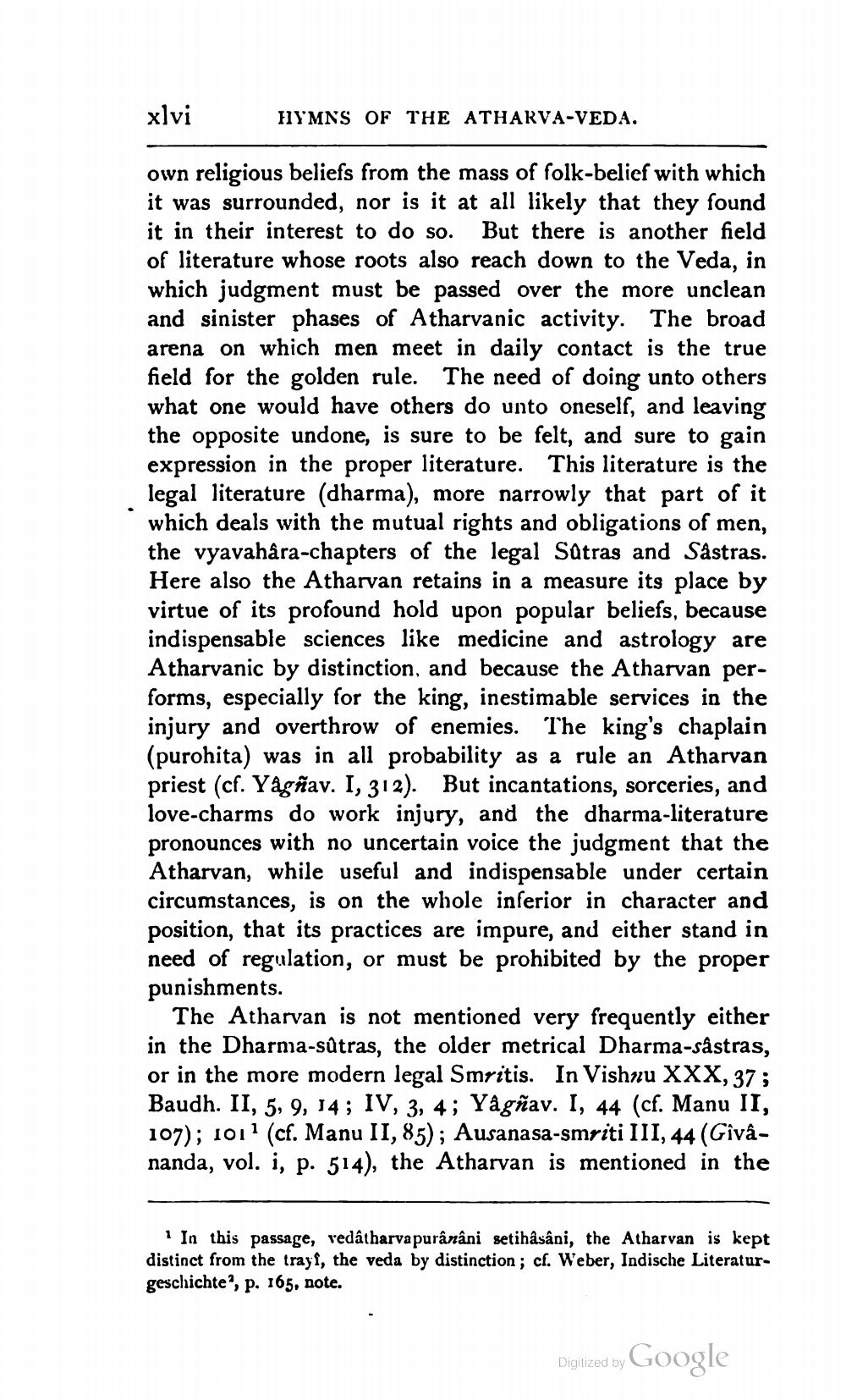________________
xlvi
HYMNS OF THE ATHARVA-VEDA.
own religious beliefs from the mass of folk-belief with which it was surrounded, nor is it at all likely that they found it in their interest to do so. But there is another field of literature whose roots also reach down to the Veda, in which judgment must be passed over the more unclean and sinister phases of Atharvanic activity. The broad arena on which men meet in daily contact is the true field for the golden rule. The need of doing unto others what one would have others do unto oneself, and leaving the opposite undone, is sure to be felt, and sure to gain expression in the proper literature. This literature is the legal literature (dharma), more narrowly that part of it which deals with the mutual rights and obligations of men, the vyavahara-chapters of the legal Satras and Såstras. Here also the Atharvan retains in a measure its place by virtue of its profound hold upon popular beliefs, because indispensable sciences like medicine and astrology are Atharvanic by distinction, and because the Atharvan performs, especially for the king, inestimable services in the injury and overthrow of enemies. The king's chaplain (purohita) was in all probability as a rule an Atharvan priest (cf. Yagñay. I, 312). But incantations, sorceries, and love-charms do work injury, and the dharma-literature pronounces with no uncertain voice the judgment that the Atharvan, while useful and indispensable under certain circumstances, is on the whole inferior in character and position, that its practices are impure, and either stand in need of regulation, or must be prohibited by the proper punishments.
The Atharvan is not mentioned very frequently either in the Dharma-sútras, the older metrical Dharma-sastras, or in the more modern legal Smritis. In Vishnu XXX, 37; Baudh. II, 5, 9, 14; IV, 3, 4; Yågñav. I, 44 (cf. Manu II, 107); 101" (cf. Manu II, 85); Ausanasa-smriti III, 44 (Givananda, vol. I, p. 514), the Atharvan is mentioned in the
1 In this passage, vedatharvapurânâni setihâsâni, the Atharvan is kept distinct from the trays, the veda by distinction; cf. Weber, Indische Literaturgeschichte, p. 165, note.
Digized by Google
Digitized by




